Physical Address
304 North Cardinal St.
Dorchester Center, MA 02124
Ophthalmic plastic surgery shares many basic techniques with general plastic surgery. During the past 100 years, new techniques have been developed which take maximum advantage of the specialised anatomy of the eyelids and periorbital region.
The patient lies supine for ophthalmic plastic surgery and we find it helpful to stand to operate. By standing rather than sitting the surgeon can place himself/herself in the best position for dissection and the placement of sutures. The drapes should leave both eyes exposed and, if under local anaesthesia, the mouth as well. Any standard skin preparation solution which is safe around the eyes may be used for ophthalmic plastic surgery. Aqueous povidone iodine 10% is safe (providing there is no sensitivity to iodine) but care is needed with chlorhexidine, some preparations of which can be toxic to the cornea.
At the end of the operation a traction suture to close the lids beneath the dressing is not essential but may be inserted if there is any risk of the dressing abrading the cornea, or to stabilise the lids if a graft or flap has been placed. Put antibiotic ointment into the eye and apply a dressing of a single layer of paraffin gauze and two eye pads onto the closed lids. Secure this with firm adhesive tape. The dressing in children, in particular, needs to be firmly secured if it is to stay in place. Some surgeons prefer to avoid a dressing, especially for smaller operations. The advantages of a dressing are that the wound is protected in the early hours after the operation and secretions are absorbed without the need for constant wiping by the patient. Swelling may also be reduced.
There is a choice of instruments for making incisions in the periocular region. A traditional scalpel is still a good choice in all situations. Alternatives include the cutting diathermy, for example the Colorado needle, and the radiofrequency knife, for example the Ellman Surgitron. These have less tactile feedback than a scalpel but give some haemostasis. The radiofrequency knife causes less wound edge damage than the cutting diathermy. A CO 2 laser is expensive; there is no tactile feedback from the skin but there is more efficient haemostasis. Laser wounds heal slightly more slowly and sutures should be left in situ for a few days longer.
Scars are least obvious if incisions are made in, or parallel to, skin creases, in the so-called relaxed skin tension lines, which form at right angles to the direction of action of the underlying muscle group and across which the tension is low ( Diag. 2.1 ).
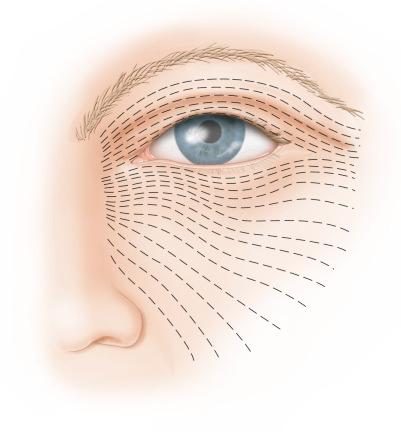
This general rule about the placement of incisions is modified in the lower lid when small lesions, not involving the lid margin, are excised. Unless there is an excess of loose skin the ellipse should be placed across the skin creases, at right angles to the lid margin, to avoid an ectropion.
The skin around the eyes is thin and mobile and it is helpful to stretch it along the intended incision line to ensure a clean cut at right angles to the skin. Incisions must be marked before distortions such as local anaesthetic infiltration, or stretching, are introduced.
Superficial wounds no deeper than the dermis and superficial subcutaneous fat may be closed with skin sutures alone (see Figs 2.2 , 10.1x,y ). In deeper wounds, for example in the forehead or cheek, subcutaneous absorbable sutures must first be inserted to close the deep tissues to avoid a sunken scar (see Fig. 10.7, Fig. 10.8 ).
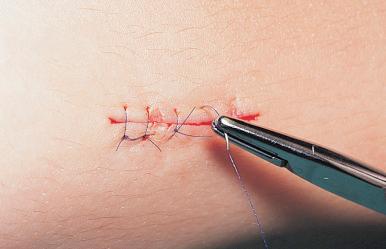
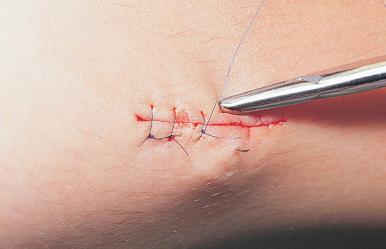
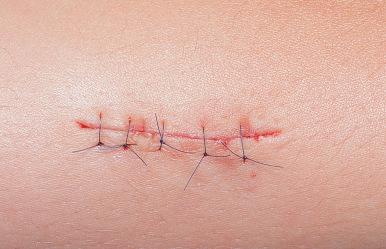
Closure of incisions made into the skin crease of the upper lid often requires an additional, deep, bite into the deeper tissues to anchor and re-create the skin crease (see Fig. 9.1h ).
Sutures in the range 4/0 to 8/0 are preferred (see Fig. 5.5 ). Absorbable or nonabsorbable interrupted or continuous sutures may be used for skin closure but fine absorbable sutures are convenient and effective in children.
Needle bites in each layer of the wound closure must be of equal depth on each side of the wound or a distorted or stepped closure will result. At the skin the needle should enter and leave at right angles. This will heap up the tissues slightly when the knots are tied and help to prevent a sunken scar.
Undermining the skin on either side of a wound will reduce tension across the closure. It is not necessary in most situations of simple wound closure. However, undermining is always necessary to create a skin flap. In the face the dissection should be within the fat layer, just deep to the dermis, to avoid damage to the facial nerve branches which are situated deep to the muscle layer. Lift the wound edge with skin hooks or a small retractor and dissect with a scalpel or scissors to undermine the skin.
Closure of a wound may result in a dog-ear at one or both ends.
A continuous interlocking suture often gives a more even closure (see Figs 10.7h , 10.8e ) than a simple ‘over-and-over’ continuous suture which can cause distortion at the skin edges.
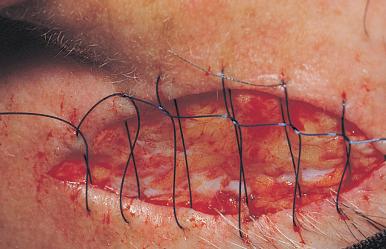
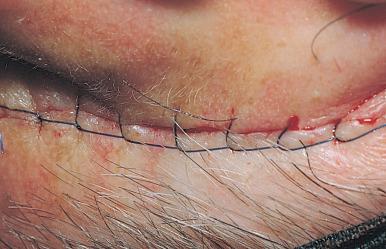
To avoid stitch marks a continuous intradermal (‘subcuticular’) suture allows adequate closure but a few interrupted sutures, or sterile adhesive dressing strips, may be needed to achieve perfect skin apposition.
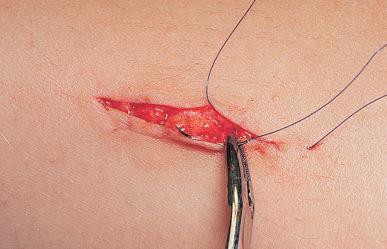
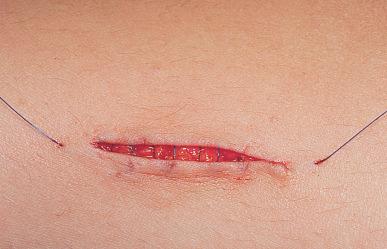
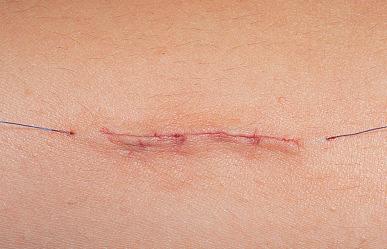
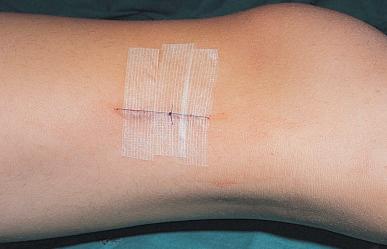
If there is a tendency for the skin edges to invert, when closing thicker skin, this can be overcome by the use of interrupted vertical mattress sutures.
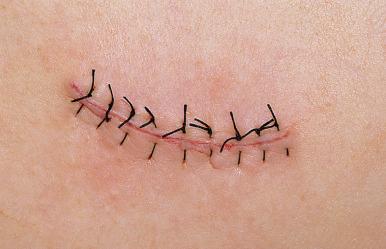
Where a V -shaped wound is to be closed or two wounds join at a T the ‘three-point’ suture is an effective method of closing the tip of the V or the junction at the T . The deep part of the suture captures the apex of the V .
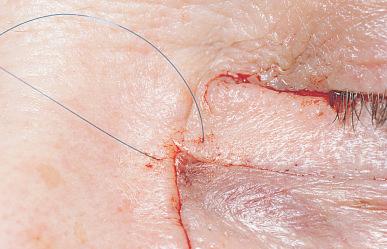

The healing process starts with an obvious hard, red scar and ends with a much less obvious, soft, relatively avascular scar. This process may take up to a year in adults and longer in children. It is usually quicker in the thin skin of the lids. If an unsightly scar persists, massage often helps to hasten softening. It can be started after 10 days and should be gently but firmly applied for 5 minutes three times daily until the scar is seen to be soft. A bland moisturising ointment may be used at the time of massage. For management of a hypertrophic scar, see 2.21 Complications and management. A sunken or distorted scar can be avoided by accurate closure of the original wound. A poor scar, once healed, may be excised and carefully resutured. Distortion due to contraction of a linear scar may be corrected with a Z -plasty where possible (see 2.23 ).
This basic technique, with variations, is described in 14.1 and 14.2 .
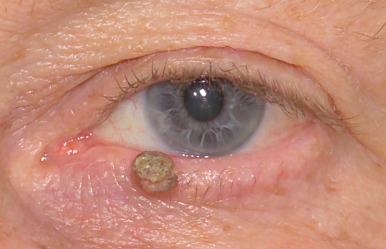
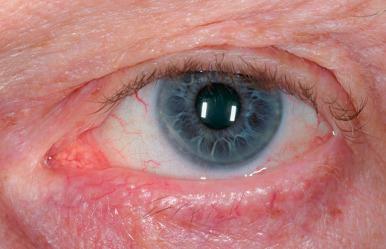
Correction of horizontal lid laxity is required in several situations. Common techniques include lid shortening (see 14.1 , 14.2 ), lateral tarsal strip (see 7.2 ) and the Bick procedure (see 7.3 ).
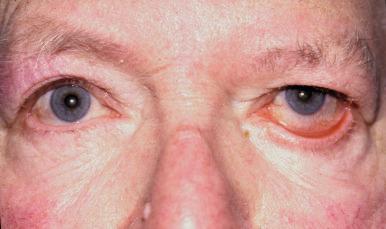
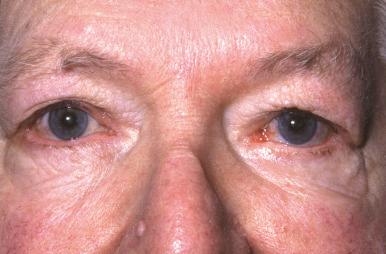
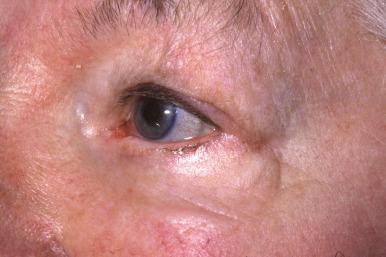
Become a Clinical Tree membership for Full access and enjoy Unlimited articles
If you are a member. Log in here